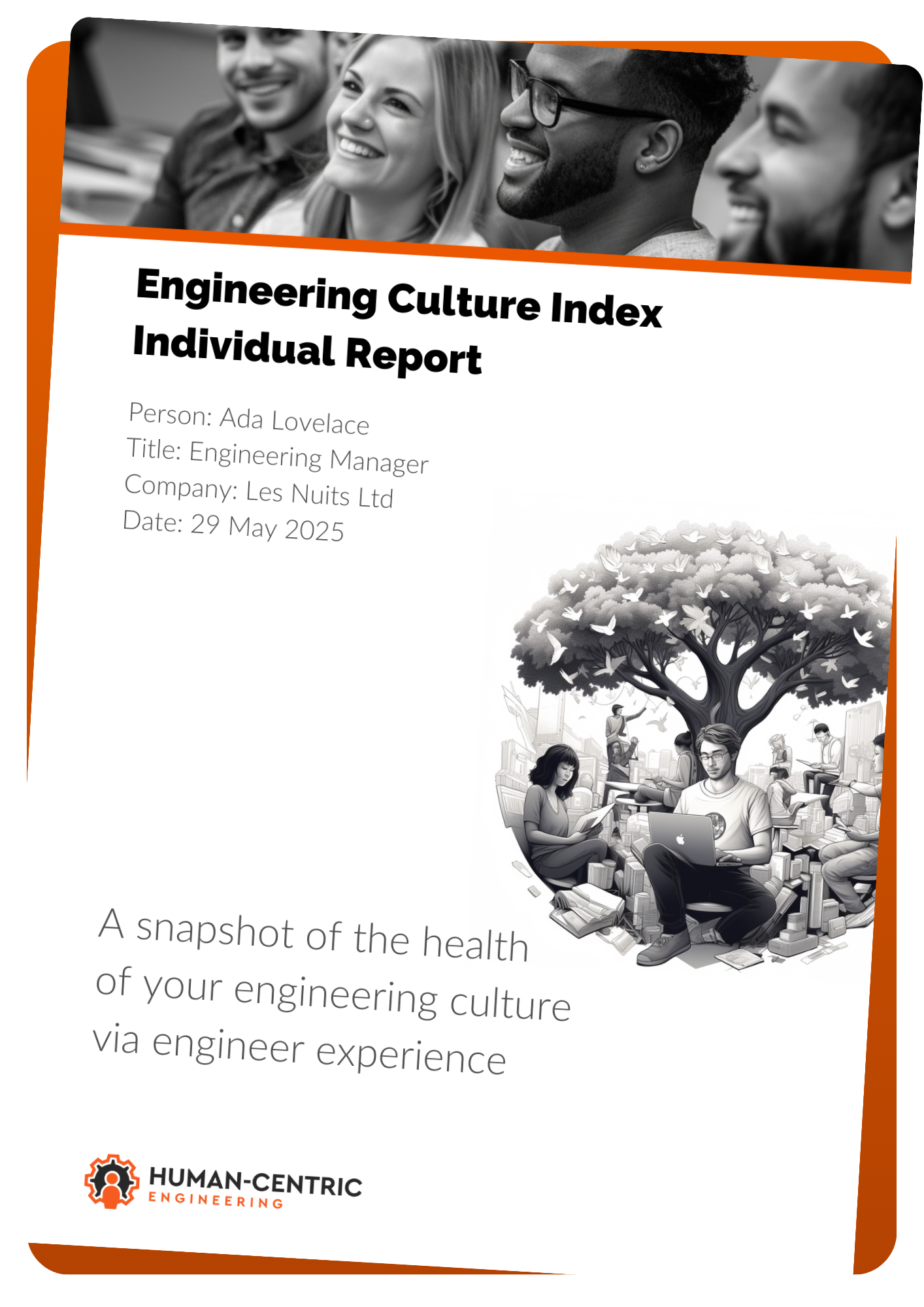Engineering Culture Index
Discover the health of your engineering culture via the engineer experience
✓ A structured survey of Mastery, Autonomy, and Purpose
✓ PDF report sent directly to your email
✓ Discover strong areas to lean on
✓ Uncover areas to focus on
Why take the survey?
The factors influencing engineering culture are not always easy to see.
It’s a journey of continuous improvement with peaks, troughs, plateaus and setbacks.
It’s not always clear where you are on your journey, and which direction you may explore next.
Our Engineering Culture Index survey gives you a compass and a map to help you visualise your culture and inspire your next steps.
Suitable for all hands-on folk in tech
It’s all about your experience, so it’s suitable for all levels, such as:
✓ Tech Lead ✓ Engineering Principal ✓ Engineer ✓ Architect ✓ Junior Developer
About the Engineering Culture Index Survey
Measuring the subjective dimensions of an engineering culture
The Engineering Culture Index survey is based on 12 categories of questions to understand the subjective experience of engineers. The categories are grouped into three columns representing the dimensions of intrinsic human motivation identified by Self-Determination Theory, namely Mastery, Autonomy and Purpose so that the survey is directly related to aspects of human motivation and thriving. In all, there are 72 statements which use a Likert scale to capture a positive or negative response from the engineer. Woven into the survey is the evidence-based research of Ron Westrum and the predictive influence of organisational culture on software delivery performance and organisational performance.
Culture, by its emergent nature, defies accurate measurement. It is an intuitive ‘tacit knowing’ derived from our subjective experiences. Culture results from our collective underlying assumptions and worldviews and our experience of the interactions which ensue from acting on our beliefs and values. The Engineering Culture Index is a working hypothesis on engineering culture which is version controlled and will be modified over time to reflect emerging insights and changes in the craft of software engineering.
Mastery
Care and quality in engineering and continual growth as teams and individuals.
Craft
Pride in Work, Care for Quality, Technical Excellence
Creativity
Experimentation, Prototyping, Innovation, Hypothesis-Driven Culture, Implementing Novelty.
Agency
Influence, Autonomy, Empowerment, Ownership, Accountability, Self-Organising Teams, Sustainable Pace.
Leadership
Decision Making, Taking Actions, Organisational Cohesion, Collaboration, Small ‘L’ Leadership, Shared Responsibility
Professionalism
Technical Practices, Principles, Standards, Competencies, Attitudes, and Behaviours.
Autonomy
Self-directed teams and individuals collaborating effectively.
Trust
Dependability, Psychological Safety, Strong Relationships, Honesty, Vulnerability.
Resources
Tools, Environments, Automation, Structures, Processes, Operational Excellence.
Engagement
Momentum, North Star, Goals, Aspiration, Vision, Potential, Destination, Journey, Orientation, Narrative
Learning
Knowledge Sharing, Dedicated Learning Time, Communities of Practice, Continuous Improvement Mentoring, Coaching, Growth Mindset, Feedback.
Context
Communication, Visibility, Documentation, Information Flows, Sensemaking, Exposing Reality
Purpose
Deep fulfilment and being part of something bigger than ourselves.
Clarity
Clarity of the primary purpose of the organisation and teams. Clear Direction. Clear Career Paths, Clear Roles and Responsibilities.
Meaning
Inclusion, Belonging, Connection, Contribution, Aligned Values, Meaningful Results, Individual Transformation, Stability, Feeling Valued, Engagement, Energy, Motivation, Flow, Challenge, Inspiration, Wellbeing
The individual survey questions to support the above matrix of categories is open-sourced and available on GitHub at Engineering Culture Index.
Take the survey
Take the survey now to discover the strengths in your engineering culture and identify areas for improvement.

